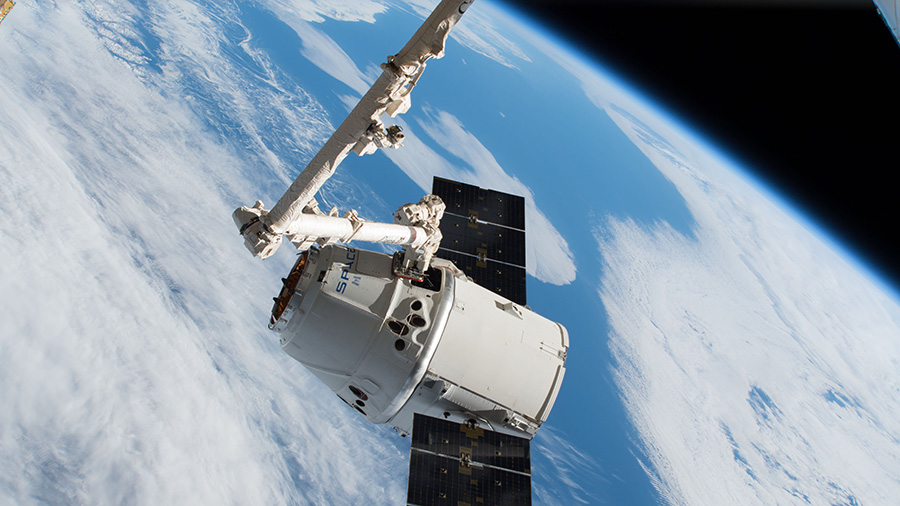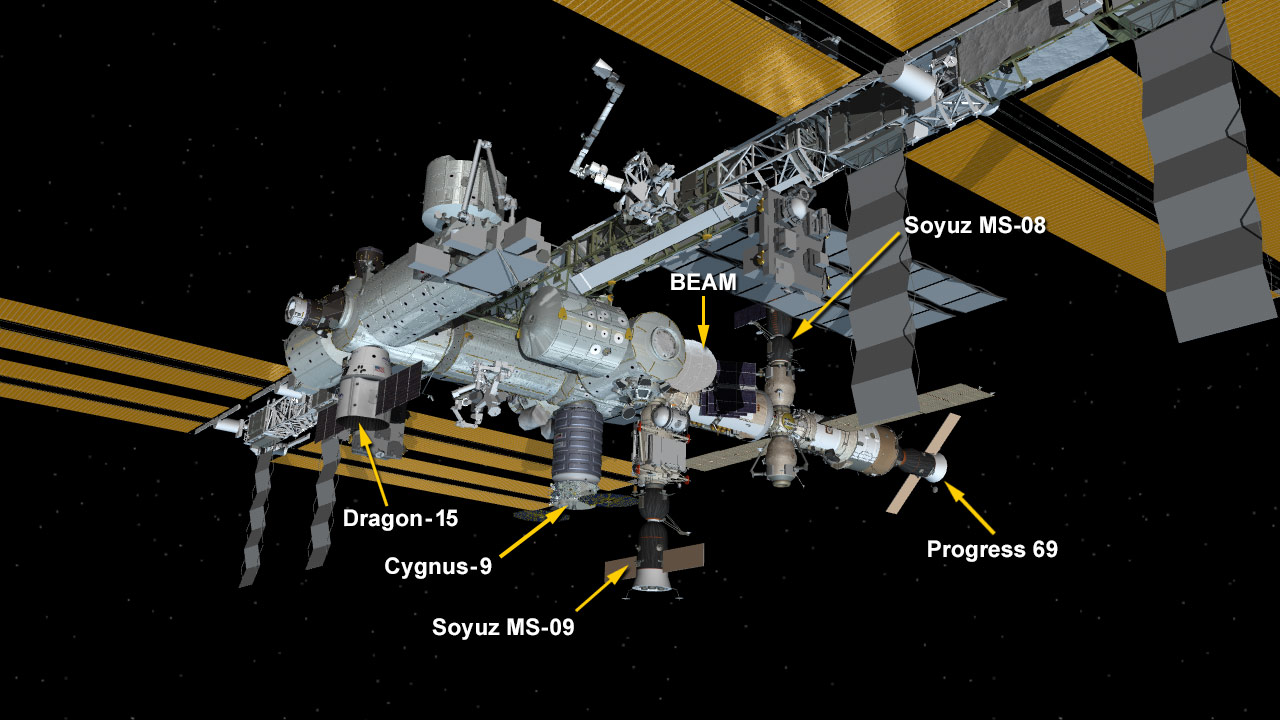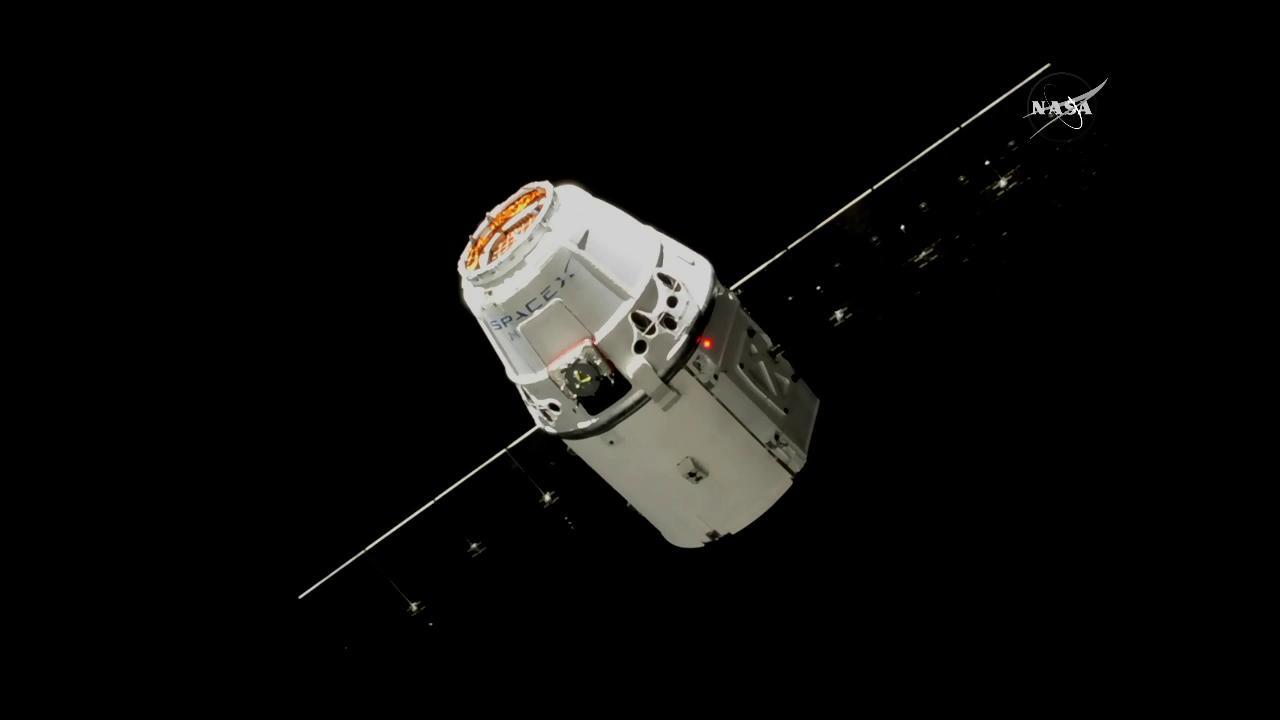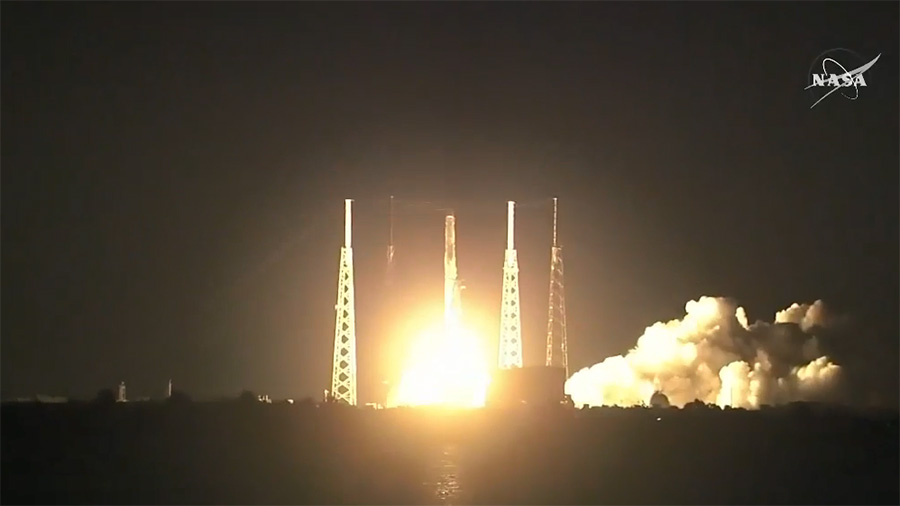New Earth Obs Study Installed Before Monday Russian Cargo Mission
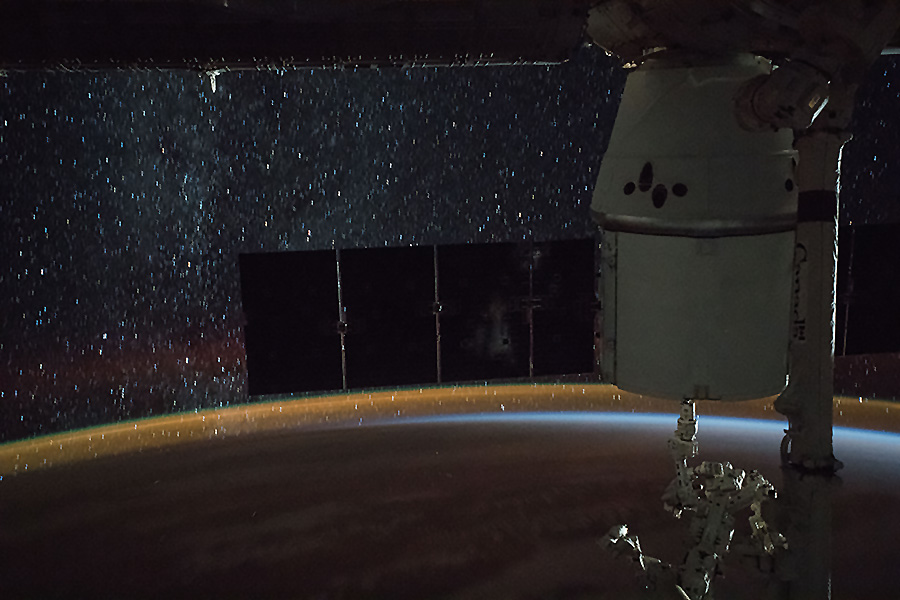
More research gear continues to be unloaded from inside and outside of the SpaceX Dragon cargo craft today. Back on Earth, another resupply ship is poised to blast off Monday on a quick delivery mission to the International Space Station.
Overnight, mission controllers commanded the Canadarm2 robotic arm to extract a new Earth-observing experiment from the rear of the Dragon space freighter. The new ECOSTRESS gear was then remotely installed on the outside of the Kibo laboratory module. ECOSTRESS will provide thermal infrared measurements of Earth’s surface helping scientists assess water and vegetation changes on agriculture.
Astronauts Serena Auñón-Chancellor and Alexander Gerst processed and stowed their blood samples today for the Myotones muscle study. Observations may help doctors develop strategies to keep astronauts healthy in space and improve conditions for patients on Earth with mobility or aging issues.
The Progress 70 resupply ship from Roscosmos is being processed for launch Monday at 5:51 p.m. EDT from the Baikonur Cosmodrome in Kazakhstan. Russian mission controllers are planning a short 3 hour and 48 minute delivery trip, or just two orbits, to the station’s Pirs docking compartment. NASA TV will broadcast the launch and automated docking live beginning Monday at 5:30 p.m. and again at 9 p.m.
Get The Details…
Mark Garcia
ISS
Powered by WPeMatico



